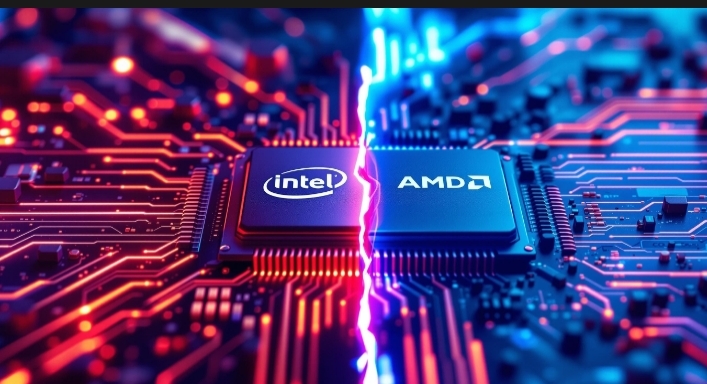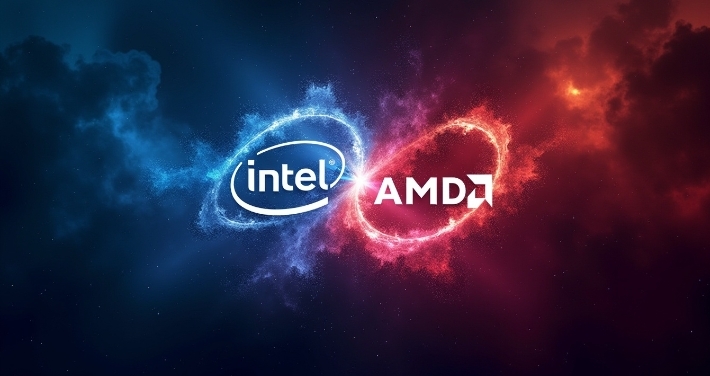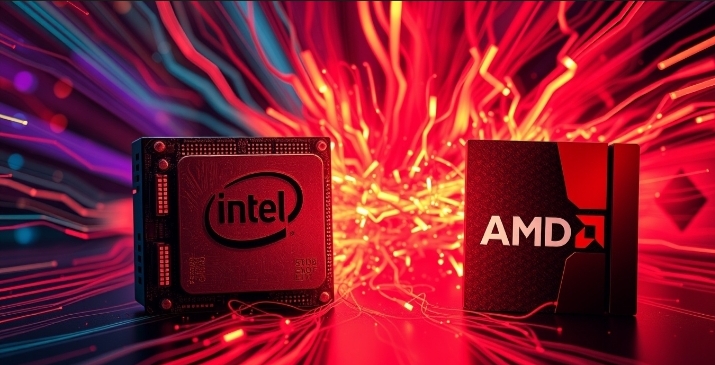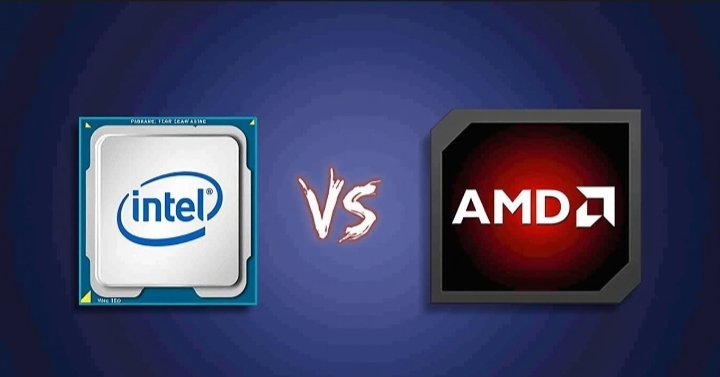Intel vs AMD
Choosing between Intel and AMD processors is like picking between two heavy weight champions. Both offer knockout performance, but their strengths serve different needs. This no-nonsense guide breaks down their differences, so you can invest wisely.

Table of Contents
Performance Faceoff: Intel vs AMD
Intel’s 13th Gen Raptor Lake chips excel at single-core tasks, making them the kings of high-FPS gaming. AMD’s Ryzen 7000 series, built on the Zen 4 architecture, dominates multi-threaded workloads like video editing and 3D rendering. For example, the Ryzen 9 7950X3D’s 3D V-Cache technology crushes frame rates in CPU-heavy games like Microsoft Flight Simulator, while Intel’s Core i9-13900K takes advantage of hybrid cores for smooth multitasking.
Price Wars: Intel vs AMD
AMD continues to undercut Intel in the budget and mid-range segments. The Ryzen 5 7600X outperforms Intel’s i5-13600K in multi-threaded applications while costing 15% less. Intel competes with bundled features like integrated Wi-Fi 6E on high-end Z790 motherboards, but AMD’s AM5 platform offers longer socket compatibility, saving on upgrade costs.
Power efficiency: Intel vs AMD
AMD’s 5nm process node gives the Ryzen 7000 CPUs a thermal advantage. The Ryzen 7 7700X sips 105W under load, while Intel’s i7-13700K guzzles 125W. Gamers on the compact tend to lean towards AMD for lower heat output, but Intel’s adaptive voltage tech reduces energy waste during light tasks.

Intel vs AMD: Detailed Comparison Table
| Category | AMD Ryzen 7000 | Intel 13th Gen |
|---|---|---|
| Architecture | Zen 4 (5nm) | Raptor Lake (Intel 7) |
| Core/Thread Count | Up to 16 cores / 32 threads | Up to 24 cores / 32 threads |
| Max Clock Speed | 5.7 GHz (Ryzen 9 7950X) | 5.8 GHz (Core i9-13900KS) |
| Integrated Graphics | RDNA 2 (Entry-level) | UHD 770 (Improved encoding) |
| TDP Range | 65W – 170W | 65W – 253W |
| Overclocking Support | All models unlocked | K-series chips only |
| Platform Compatibility | AM5 (DDR5/PCIe 5.0) | LGA 1700 (DDR4/DDR5 hybrid) |
| Price Range (USD) | 299–299–699 | 294–294–589 |
Intel vs AMD
Gaming Performance: Raw Speed vs. Smart Cache
Intel’s high clock speeds and optimized latency shine in esports titles (Valorant, CS2), where every frame counts. AMD’s 3D V-Cache models, however, dominate open-world games (Cyberpunk 2077, Elden Ring) by reducing stutter. Benchmark data shows the Ryzen 7 7800X3D delivers 12% more at 1440p than the i7-13700K, 1% less.
Productivity and Content Creation: The Core Wars
AMD’s Threadripper PRO 7000 series (96 cores!) outpaces Intel’s Xeon in 4K video export and AI training. But for mainstream users, the Core i5-13600K’s 14 cores handle Photoshop and Premiere Pro 20% faster than the Ryzen 5 7600X, thanks to Intel’s Thread Director.

Future-proof: Platform longevity matters
AMD’s AM5 socket is guaranteed support until 2025, letting you upgrade CPUs without changing motherboards. Intel’s LGA 1700 is reaching end-of-life, forcing a platform change for next-generation chips. Both support DDR5 and PCIe 5.0, but AMD’s chipset offers more USB 4.0 ports natively.
Which should you buy?
Gamers on a budget: AMD Ryzen 5 7600 ($229) + B650 board.
High-end gaming/streaming: Intel Core i7-13700K ($409).
Content Creator: AMD Ryzen 9 7950X ($599).
Workstation Build: AMD Threadripper PRO 7995WX ($9,999).
FAQ: Intel vs AMD
Q: Which is better for gaming, Intel or AMD?
A: Intel leads in pure single-core speed (esports), while AMD’s 3D V-Cache chips are the best in AAA titles.
Q: Do AMD processors run hotter than Intel?
A: No. Zen 4’s 5nm design runs cooler than Intel’s 13th Gen under full load.
Q: Is AMD more future-proof?
A: Yes. AM5 motherboards support the upcoming Ryzen 8000/9000 CPUs.
Q: Why is Intel more expensive?
A: Intel bundles premium features like Thunderbolt 4 and spends a lot on marketing.
Q: Can I use an AMD CPU with an NVIDIA GPU?
A: Absolutely. Pair the Ryzen 7 7700X with the RTX 4080 without a hitch.
Conclusion: Intel vs AMD
Intel and AMD continue to push the boundaries of processing power, but their rivalry isn’t about declaring an outright winner — it’s about matching the right tool for the job.
For gamers:
Whether chasing peak frame rates in competitive titles or taking advantage of optimized software like the Adobe suite, Intel’s raw clock speeds and hybrid architecture deliver unmatched responsiveness. The Core i9-13900K is a beast for 1080p/1440p gaming rigs.
For creators and multitaskers:
AMD’s Ryzen 7000 series, with its high core count and energy efficiency, crushes rendering, streaming, and multithreaded workloads. The Ryzen 9 7950X and Threadripper PRO chips are productivity powerhouses.
For budget builders:
AMD’s AM5 platform offers better long-term value with guaranteed upgrade paths, while Intel’s last-generation (12th Gen) discounts appeal to DDR4 holdouts.
Future-proof edge:
AMD’s commitment to socket longevity (AM5 to 2025+) makes it a better choice for upgraders. Intel users may soon face a motherboard swap.
Ultimately, there are no “bad choices” – only trade-offs. Prioritize your use case, budget, and upgrade plans. Whether you’re on Team Blue or Team Red, both brands offer cutting-edge technology to crush your demands. Stay informed, stay flexible, and let your workloads be the champions.


This Post Has 2 Comments
Pingback: Intel Nova Lake: Intel next gen CPU - Digitallguide
Pingback: AMD Ryzen 7 7800X3D Gaming Processor